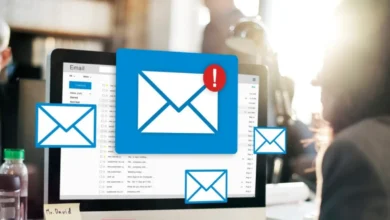Why Do Your Emails End Up in Spam, and How Can You Fix It?

Important emails often land in spam at the most inconvenient times. One minute someone is waiting for a response, and the next they’re wondering if they’re being ignored—when really, the message sits buried under sketchy ads and scam attempts.
This article breaks down the mystery of why emails go to spam and provides real-world fixes that work. No technical jargon—just clear explanations about email deliverability to ensure messages reach real people. By the end, readers will understand what happens behind the scenes and have solid strategies to keep emails in the inbox where they belong.
Why Your Emails Go to Spam
Every day, approximately 300 billion emails travel across the internet. With that kind of volume, email providers like Gmail and Outlook must use sophisticated filters to separate good content from junk.
It works similarly to how parents screen calls—if they don’t recognize a number, they often let it go to voicemail. Email providers use similar methods, analyzing multiple factors to determine whether a message belongs in the inbox or the spam folder.
Technical Issues That Affect Deliverability
Behind the scenes, technical factors influence email deliverability—even if the content appears appropriate.
Email authentication works like proper identification for event entry. Without it, security—or in this case, email providers—becomes suspicious and might deny access. These technical settings prove senders are actually who they claim to be. Many companies rely on specialized email deliverability solutions to handle this complicated technical aspect. These tools detect authentication issues early and help set up proper verification systems before emails start bouncing.
Sending patterns matter. If a sender typically emails a few people daily but suddenly sends hundreds, it raises red flags—suggesting either a compromised account or spam activity. Email providers notice these sudden changes and often respond by sending messages directly to spam.
Common Triggers for Spam Filters
Several factors make spam filters suspicious of perfectly innocent emails.
Sender reputation acts like an email credit score. If someone has been caught sending spammy content before or many recipients have marked their messages as spam, email providers become wary. They track senders via email addresses and servers—just as reputations follow people in school after an embarrassing moment.
The actual content of the message proves extremely important. Spam filters react negatively to excessive exclamation points, CAPITAL LETTERS, or sales phrases like ACT NOW or LIMITED TIME OFFER. These represent classic spam tactics, and using them makes emails look untrustworthy.
How to Check If Your Emails Are Going to Spam
Before fixing a problem, one must identify it. Here are methods to determine if emails receive the spam treatment:
Testing Tools and Methods
Useful tools exist that help play spam detective and identify if emails might trigger filters.
Most quality email marketing platforms include built-in spam testing features. They run drafts through common spam filters before sending and highlight potential problems. Some standalone testing services focus specifically on deliverability for those wanting more detailed analysis.
Monitoring Your Sender Reputation
In the email world, reputation follows senders everywhere. Checking it regularly helps catch problems before they escalate.
Several websites allow senders to check their email reputation score, similar to a credit score. These scores assess factors such as complaint rates, bounce rates, and spam trap hits. Poor scores indicate emails likely head straight to spam folders.
Comparison of Common Email Deliverability Issues
| Issue | Impact on Deliverability | Difficulty to Fix | Best Solution |
| Poor sender reputation | Very High | Medium | Rebuild gradually with quality sending practices |
| Missing authentication | High | Low | Set up SPF, DKIM, and DMARC records |
| Spammy content | Medium | Low | Revise wording, reduce sales language |
| Irregular sending patterns | Medium | Low | Maintain a consistent sending schedule |
| Purchased email lists | Very High | High | Stop using and build organic lists |
How to Fix Email Deliverability Problems
Now for the solutions—strategies to get emails back where they belong.
Improving Your Sender Reputation
Improving sender reputation is like rebuilding trust—it takes time but is achievable
Start by only sending emails to people who want communication. That means avoiding purchased email lists and removing addresses that never engage. Recipient interactions—such as opening emails and clicking links—send positive signals to email providers. These positive interactions come from sending content people care about rather than constant sales pitches.
Technical Solutions
Getting technical aspects right makes a significant difference in whether emails reach their destination or get lost in spam folders.
Setting up authentication protocols—SPF, DKIM, and DMARC—provides digital signatures that verify emails as legitimate. Maintaining clean email lists by removing bounced addresses or consistently unengaged contacts prevents wasted sends that damage reputation.
Content Best Practices
The actual words and design used in emails matter more than most realize.
Even in sales emails, avoid overly promotional language that resembles TV infomercials. Reduce exclamation points, ALL CAPS, and words like free or amazing offer. Mix text and images naturally—emails consisting of just one large image look suspicious to spam filters. Experiment with different subject lines to see which ones generate opens without triggering spam alerts.
Maintaining Good Email Deliverability
Once deliverability problems are fixed, good habits must continue to maintain inbox placement.
Regular Monitoring and Testing
Checking deliverability regularly works like medical checkups—it helps catch problems before they become serious.
Make testing email deliverability a routine using specialized tools. They reveal factors hurting inbox placement chances. Keep a close watch on open rates—sudden drops might indicate spam folder placement. When problems appear, address them quickly before they damage the sender’s reputation.
Building Healthy Email Lists
Quality matters more than quantity in email lists. Engaged subscribers are more valuable than a large, uninterested audience. An email list featuring focused readers brings better results compared to a broad network of uninformed contacts.
Every subscription process requires double opt-in verification. The confirmation system lets subscribers demonstrate their genuine desire to receive messages. Maintain a healthy list by regularly removing inactive contacts—those who haven’t engaged in six to twelve months—to improve performance metrics. Ensure the unsubscribe process is simple and clearly visible. The process of unsubscribing should be simple since difficult unsubscribes often lead to tracking messages as spam thus damaging your sender’s reputation and deliverability.
Conclusion
Understanding spam filters and following these best practices improve email deliverability. Many email strategies benefit themselves and others because they assist message delivery to target recipients along with reducing junk mail accumulation worldwide.
Frequently Asked Questions
Why do my emails go to spam even though I’m not sending junk?
Email providers use complex algorithms examining numerous factors beyond message content. Technical issues like missing authentication protocols or poor sender reputation can send legitimate emails to spam folders.
How long does it take to fix email deliverability problems?
Minor issues resolve quickly, but repairing a damaged sender reputation may take weeks or months of consistent good practices. Email providers maintain long memories when it comes to sending behavior.
Is it better to use my domain for sending emails or a free email service?
Using a custom domain with proper setup provides more control over deliverability and appears more professional, but requires technical knowledge to configure correctly. Free services offer simplicity but less control over deliverability factors.





